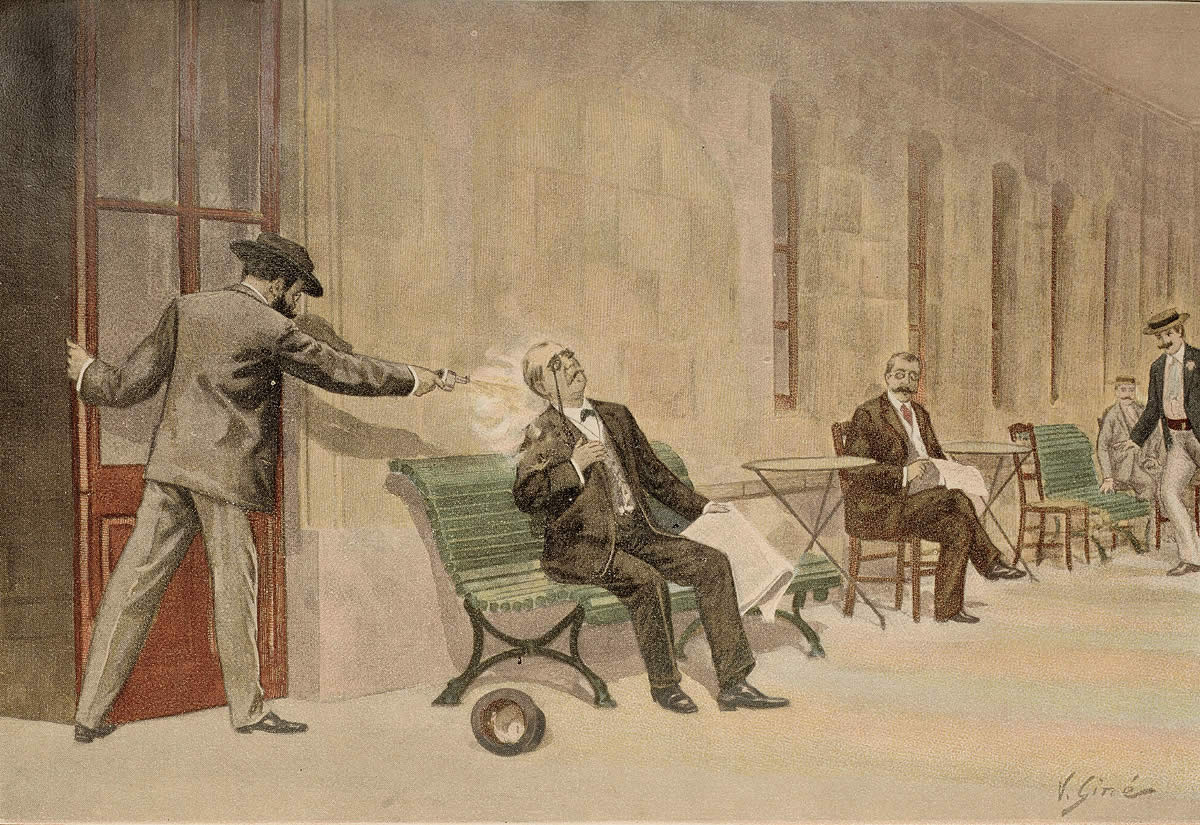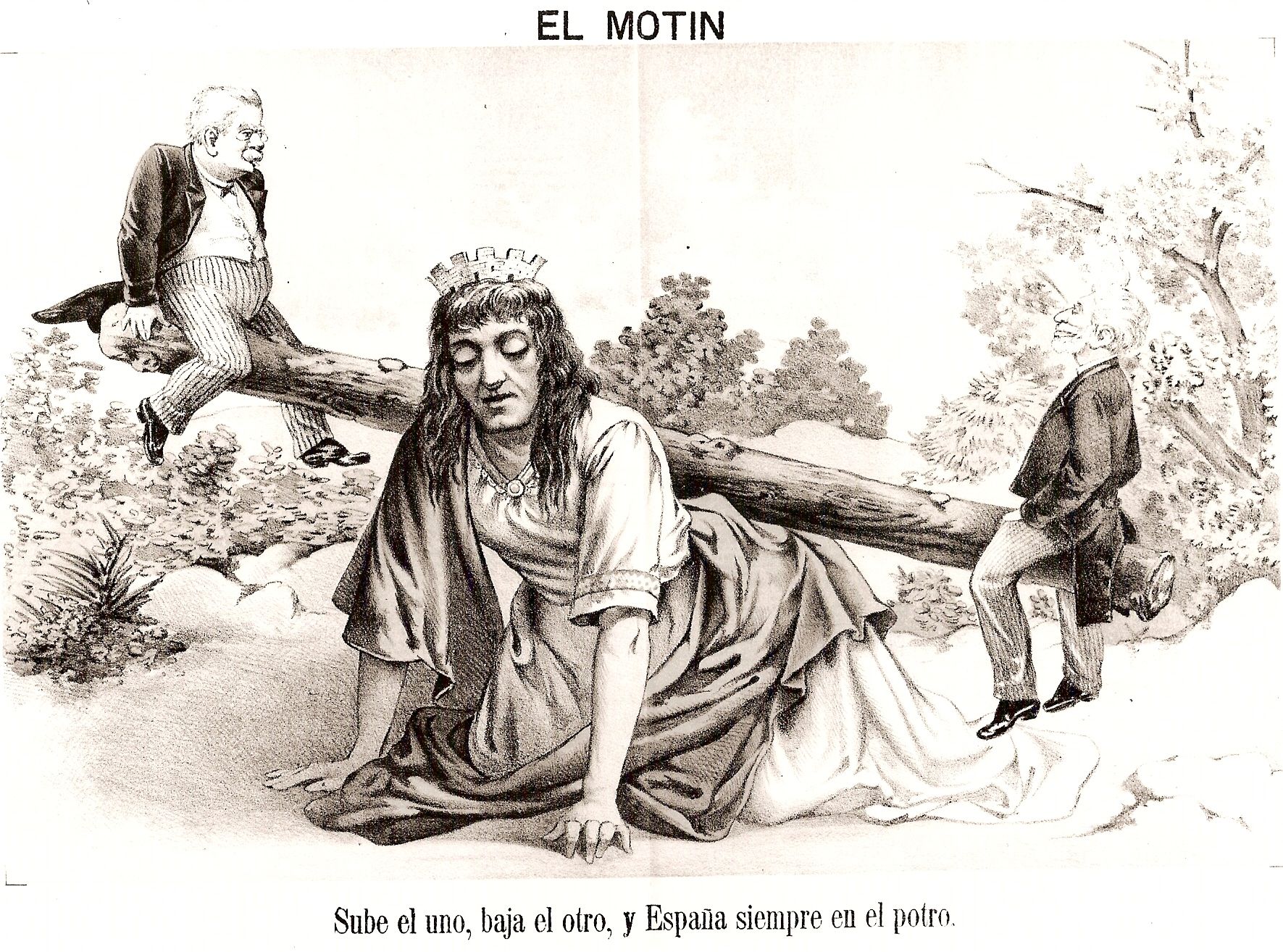|
Spanish General Election, 1898
The 1898 Spanish general election was held on Sunday, 27 March (for the Congress of Deputies) and on Sunday, 10 April 1898 (for the Senate of Spain, Senate), to elect the 8th Cortes Generales#Restoration (1874–1930), Cortes of the Restoration (Spain), Kingdom of Spain in the Restoration period. All 445 seats in the Congress of Deputies (plus two special districts) were up for election, as well as 180 of 360 seats in the Senate. The election was called amid a period of political unstability following the Assassination of Antonio Cánovas del Castillo, assassination of previous Prime Minister of Spain, prime minister Antonio Cánovas del Castillo on 8 August 1897 by Italian anarchist Michele Angiolillo and the brief premiership of Marcelo Azcárraga Palmero, Marcelo Azcárraga. Respecting the ''turno'' system, Queen Regent Maria Christina of Austria, Maria Christina appointed a new government under Liberal Party (Spain, 1880), Liberal leader Práxedes Mateo Sagasta on 4 October 189 ... [...More Info...] [...Related Items...] OR: [Wikipedia] [Google] [Baidu] |
Congress Of Deputies
The Congress of Deputies ( es, link=no, Congreso de los Diputados, italic=unset) is the lower house of the Cortes Generales, Spain's legislative branch. The Congress meets in the Palacio de las Cortes, Madrid, Palace of the Parliament () in Madrid. It has 350 members elected by constituency, constituencies (matching fifty Provinces of Spain, Spanish provinces and two Autonomous cities of Spain, autonomous cities) by closed list proportional representation using the D'Hondt method. Deputies serve four-year terms. The presiding officer is the President of the Congress of Deputies, who is elected by the members thereof. It is the analogue to a speaker. In the Congress, MPs from the List of political parties in Spain, political parties, or groups of parties, form Parliamentary group (Spain), parliamentary groups. Groups must be formed by at least 15 deputies, but a group can also be formed with only five deputies if the parties got at least 5% of the nationwide vote, or 15% of the ... [...More Info...] [...Related Items...] OR: [Wikipedia] [Google] [Baidu] |
Conservative Party (Spain)
The Liberal Conservative Party ( es, Partido Liberal-Conservador, PLC), also known more simply as the Conservative Party ( es, Partido Conservador, PC), was a Spanish political party founded in 1876 by Antonio Cánovas del Castillo. History Foundation The Conservative tag was for the type of ideas which, when thinking of questions of state, then dominated in Spain. The political formation of Spain by Antonio Cánovas del Castillo at the request of Alfonso XII of Spain, who assumed the crown after the failure of the First Spanish Republic. The Conservative Party brought together a varied group of people, from the supporters of Isabel II of Spain before the Republic to the members of other groups he had formed. Its existence was linked to Cánovas himself and on his death in 1897 it was kept going by Francisco Silvela. In 1885, the party signed the Pact of El Pardo with the Liberal Party of Sagasta, in which the parties agreed to alternate (''turno'') in power after the death of ... [...More Info...] [...Related Items...] OR: [Wikipedia] [Google] [Baidu] |
Michele Angiolillo
Michele Angiolillo Lombardi (; 5 June 1871 – 20 August 1897) was an Italian anarchist, born in Foggia, Italy. He assassinated Spanish Prime Minister Antonio Cánovas del Castillo in 1897 and was captured and executed by Spanish authorities in the same year. Motive and the Montjuïc trial On 7 June 1896, a bomb was thrown at the Corpus Christi procession in Barcelona. At least twelve people died and 45 were seriously injured. The crime, which was attributed by police to an unidentified anarchist, precipitated an aggressive reprisal against Spanish anarchists, communists, socialists and republicans, in what became known as the Montjuïc trial: 300 alleged revolutionaries were jailed at Montjuïc Fortress, and confessions were extracted by torture. The prime minister Antonio Cánovas del Castillo himself ordered the repression. Reports of the prisoner abuse were circulated widely in the European press. Of the 87 prisoners taken to trial at Montjuïc, eight received death sente ... [...More Info...] [...Related Items...] OR: [Wikipedia] [Google] [Baidu] |
Italian Anarchist
Italian anarchism as a movement began primarily from the influence of Mikhail Bakunin, Giuseppe Fanelli, and Errico Malatesta. Rooted in collectivist anarchism, it expanded to include illegalist individualist anarchism, mutualism, anarcho-syndicalism, and especially anarcho-communism. It participated in the ''biennio rosso'' and survived Italian Fascism. Platformism''El movimiento libertario en Italia'' by Bicicleta: Revista de comunicaciones libertarias and were particularly common in Italian anarchism and continue to influence the movement today. The < ... [...More Info...] [...Related Items...] OR: [Wikipedia] [Google] [Baidu] |
Antonio Cánovas Del Castillo
Antonio Cánovas del Castillo (8 February 18288 August 1897) was a Spanish politician and historian known principally for serving six terms as Prime Minister and his overarching role as "architect" of the regime that ensued with the 1874 restoration of the Bourbon monarchy. He died in office at the hands of an anarchist, Michele Angiolillo. Leader of the Conservative Party (Spain), Liberal-Conservative Party—also known more simply as the Conservative Party—the name of Cánovas became symbolic of the alternate succession in the Restoration regime along with Práxedes Mateo Sagasta's. Early career Born in Málaga as the son of Antonio Cánovas García and Juana del Castillo y Estébanez, Cánovas moved to Madrid after the death of his father where he lived with his mother's cousin, the writer Serafín Estébanez Calderón. Although he studied law at the Complutense University of Madrid, University of Madrid, he showed an early interest in politics and Spanish history. His a ... [...More Info...] [...Related Items...] OR: [Wikipedia] [Google] [Baidu] |
Assassination Of Antonio Cánovas Del Castillo
Italian anarchist Michele Angiolillo assassinated Spanish Prime Minister Antonio Cánovas del Castillo on 8 August 1897, in Gipuzkoa. The head of government had been vacationing in the . The assassin was immediately arrested, tried, and executed. He justified the murder as revenge for torture during the Montjuic trial. Background Near the turn of the 20th century, Barcelona experienced a wave of Anarchist terrorism, anarchist terrorist attacks. The June 1896 bombing of the Corpus Christi procession had the greatest repercussions. With six dead and 42 injured, a harsh police repression led to the famous Montjuïc trial, in which 400 "suspects" were imprisoned in the Montjuïc Castle and brutally tortured, with their nails torn off, feet crushed, and skin burned by cigars. Of the 28 sentenced to death, five were executed. Another 59 were sentenced to life imprisonment and 63 were found innocent but deported to the Spanish Sahara. The Montjuïc trial had a significant internation ... [...More Info...] [...Related Items...] OR: [Wikipedia] [Google] [Baidu] |



